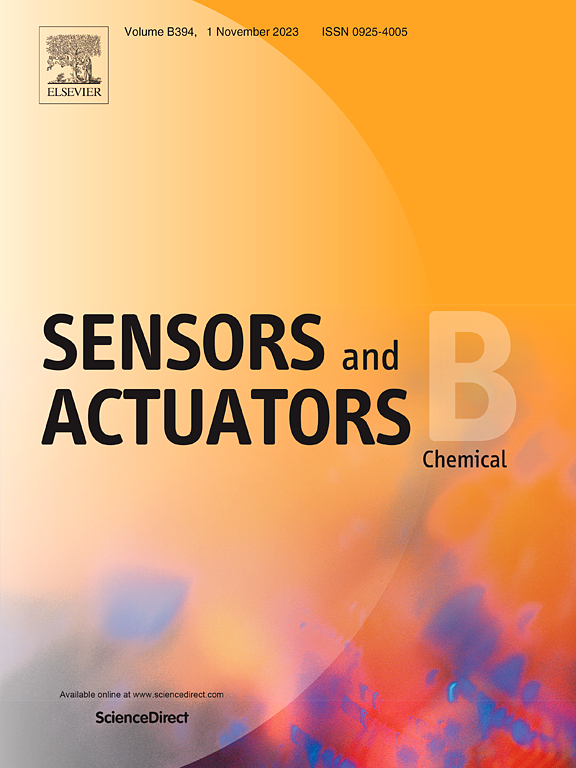一个硼酸功能化的全共轭共价有机框架,显著提高了对唾液酸的亲和力和荧光检测
IF 3.7
1区 化学
Q1 CHEMISTRY, ANALYTICAL
引用次数: 0
摘要
唾液酸(SA)的检测对卵巢癌的早期诊断至关重要。在这项研究中,我们首次构建了一种新的硼酸功能化共价有机框架(TMTA-PBA-COF),用于准确检测SA。结合TMTA-COF优异的发光特性和SA中硼酸部分与顺式二醇部分的特异性结合能力,构建的荧光传感器在1 ~ 500 μM的线性范围内实现了对人血清中SA的敏感和选择性检测,检测限低至0.45 μM。至关重要的是,我们还建立了一个智能反向传播神经网络模型来处理荧光传感结果,通过深度机器学习可以准确识别SA浓度,而无需繁琐的数据处理。此外,将TMTA-PBA-COF的实际应用扩展到潜在指纹的视觉识别。本工作为卵巢癌早期诊断提供了一种智能、高效的分析方法,拓展了该材料的多功能应用。本文章由计算机程序翻译,如有差异,请以英文原文为准。

A boronic acid functionalized fully conjugated covalent organic framework for significantly improved affinity and fluorescence detection for sialic acid
Detection of sialic acid (SA) is crucial for the early diagnosis of ovarian cancer. In this study, we present the construction of a novel boronic acid functionalized covalent organic framework (TMTA-PBA-COF) for the first time for the accurate detection of SA. By combining the excellent luminescent properties of TMTA-COF with the specific binding capability of the boronic acid moiety to the cis-diol moiety in SA, the constructed fluorescent sensor achieved a sensitive and selective detection of SA in human serum within the linear range of 1–500 μM with a low detection limit of 0.45 μM. Crucially, we also established an intelligent back propagation neural network model to process the fluorescence sensing results, enabling accurate identification of SA concentrations through deep machine learning without cumbersome data processing. In addition, the practical application of TMTA-PBA-COF is extended to the visual identification of latent fingerprints. This work provides an intelligent and efficient analytical method for the early diagnosis of ovarian cancer and expands the multifunctional application of the material.
求助全文
通过发布文献求助,成功后即可免费获取论文全文。
去求助
来源期刊

Sensors and Actuators B: Chemical
工程技术-电化学
CiteScore
14.60
自引率
11.90%
发文量
1776
审稿时长
3.2 months
期刊介绍:
Sensors & Actuators, B: Chemical is an international journal focused on the research and development of chemical transducers. It covers chemical sensors and biosensors, chemical actuators, and analytical microsystems. The journal is interdisciplinary, aiming to publish original works showcasing substantial advancements beyond the current state of the art in these fields, with practical applicability to solving meaningful analytical problems. Review articles are accepted by invitation from an Editor of the journal.
 求助内容:
求助内容: 应助结果提醒方式:
应助结果提醒方式:


